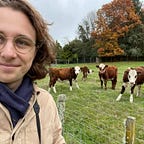What Are Elves?
Fantasy authors often get them wrong
What kind of question is that? Everyone knows what an elf is!
Pointy-eared, beautiful, long-lived beings with grand, ancient cities or hidden woodland villages, adept at spellcraft and archery, though often weaker than humans. This is the image in your mind, right?
We can thank J.R.R. Tolkien for that.
Generally, the depiction of elves in modern fantasy can be credited to the success and popularity of the Lord of the Rings, and although more recent authors have adapted and tweaked Tolkien’s concept, they largely remain the same. At least, they share more in common with Tolkien’s elves than with the real elves that inspired him.
As a scholar of Old English and Norse literature, Tolkien knew about the Medieval, pre-Christian belief in elves. The texts Tolkien studied had a heavy influence on his fiction writing, but he made some distinctive changes to the original pagan conception of elves.
Chief among these is his depiction of elves as physical beings. In reality, elves do not have physical forms. The Heathen peoples of Western and Northern Europe believed elves to be incorporeal — they were spirits, with godlike status, existing above and beyond the material world.
Elves were associated with the ancestral dead, in particular those buried in great barrows, or tumuli. It was believed that the spirits of these people — who had become elves on death due to either power, righteousness, or fame — could be worshipped and propitiated with offerings, and in return they would grant the venerable luck and blessings.
Elves were a type of genius loci (spirit of a place), tutelary deities who watched over their land and their people after death. The belief in and perception of elves has changed dramatically since the Middle Ages, but they are nonetheless still very real, and it can be enlightening for fantasy authors to understand the source of common features of their genre.
Why? Because elves as they are commonly depicted may be becoming a little overused. We see them all the time, and while there is nothing wrong with using popular features of fantasy, many writers would do well to innovate and reinvent the genre in new and interesting ways.
I use elves in my writing. Some of my short stories feature elves, and they appear numerous times throughout my novels. These creatures have fascinated me from a young age, so it would be uncharacteristic of me to exclude them from my work. However, in using elves I wanted to stay true to the reality a bit more and show them as they are in pagan belief.
Thus, I wrote elves as Otherworldly beings. They do not take physical form (although they often appear as such to mortal eyes), and they do not live among humans. They are immortal, since they are not bound by the same processes of aging and death as us fleshy things. They serve as guardians to particular locations — especially wild places. They are also ancestors in some sense, being the remnants of the Old Folk, the predecessors to the current race of “Man.”
And they don’t have pointy ears!
